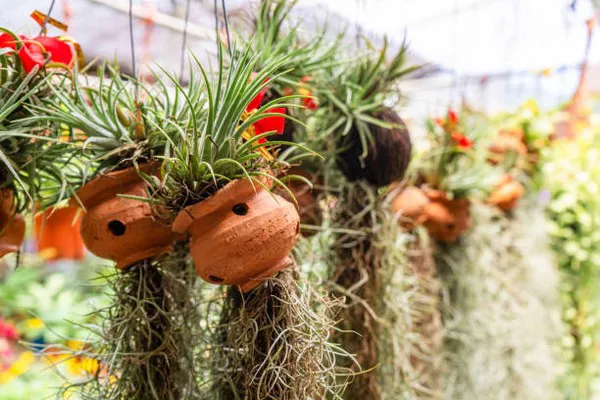Bonsai, with its delicate charm and timeless appeal, has captivated enthusiasts for centuries. Originating in China and Japan, bonsai cultivation involves the artful manipulation of trees and shrubs to create miniature landscapes that reflect the beauty of nature in miniature. Traditionally associated with outdoor cultivation, bonsai has increasingly found its way into indoor spaces, captivating urban dwellers and apartment owners alike. While indoor bonsai cultivation presents unique challenges, it also offers rewarding opportunities for enthusiasts to nurture and admire these living works of art within the confines of their homes.
Understanding Indoor Bonsai Cultivation
Before delving into the intricacies of growing bonsai indoors, it’s crucial to grasp the fundamental principles of bonsai cultivation. At its core, bonsai cultivation involves meticulously managing the growth of miniature trees or shrubs through techniques such as pruning, wiring, and root trimming. These techniques aim to create the illusion of age, maturity, and natural beauty within the confines of a small container.
When it comes to indoor bonsai cultivation, several key factors come into play:
1. Lighting: Adequate lighting is paramount for the health and vitality of indoor bonsai. While most bonsai species thrive in bright, indirect sunlight, the intensity and duration of light exposure vary depending on the species. South-facing windows typically provide the best natural light for indoor bonsai, but supplemental lighting may be necessary, especially during the darker months or in spaces with limited natural light.
2. Humidity and Air Circulation: Indoor environments often have lower humidity levels than outdoor settings, which can pose challenges for bonsai, especially species that require higher humidity. Regular misting, humidity trays, or placing the bonsai near a humidifier can help maintain optimal moisture levels. Adequate air circulation is also crucial to prevent stagnant air and fungal diseases.
3. Temperature and Climate: Bonsai species have varying temperature requirements, with most temperate species thriving in moderate indoor temperatures. However, it’s essential to consider seasonal fluctuations and provide appropriate protection during extreme weather conditions. Additionally, avoiding sudden temperature fluctuations and drafts is crucial for the health of indoor bonsai.
4. Soil and Watering: Well-draining soil is essential for bonsai cultivation to prevent waterlogged roots and root rot. A balanced watering regimen is crucial, allowing the soil to partially dry out between waterings to prevent overwatering. Monitoring the moisture levels of the soil and adjusting watering frequency accordingly is key to maintaining the health of indoor bonsai.
Selecting Suitable Bonsai Species for Indoors
Not all bonsai species are well-suited for indoor cultivation. While some species thrive in the controlled environment of indoor spaces, others require the outdoor conditions to flourish. When selecting bonsai species for indoor cultivation, consider the following factors:
1. Light Requirements: Choose species that can thrive in the available light conditions of your indoor space. Species such as Ficus, Jade, and Chinese Elm are well-known for their adaptability to indoor lighting conditions.
2. Temperature Tolerance: Opt for species that can tolerate indoor temperature fluctuations and are not overly sensitive to changes in climate. Tropical and subtropical species are often better suited for indoor cultivation due to their adaptability to warmer indoor temperatures.
3. Size and Growth Habits: Select bonsai species that exhibit compact growth habits and can thrive in the confined space of indoor containers. Species with smaller leaves and slower growth rates are often preferred for indoor bonsai cultivation.
4. Disease Resistance: Choose bonsai species that are resilient to common indoor pests and diseases. Species with robust immune systems and sturdy foliage are less susceptible to pest infestations and fungal diseases.
Some popular bonsai species that are well-suited for indoor cultivation include:
- Ficus (Ficus retusa)
- Jade (Crassula ovata)
- Chinese Elm (Ulmus parvifolia)
- Schefflera (Schefflera arboricola)
- Fukien Tea (Carmona retusa)
Essential Care and Maintenance Practices
Once you’ve selected suitable bonsai species for indoor cultivation, it’s crucial to implement proper care and maintenance practices to ensure their health and vitality:
1. Pruning and Training: Regular pruning and training are essential to maintain the desired shape and proportions of indoor bonsai. Use sharp, clean tools to carefully trim new growth, shape branches, and encourage ramification.
2. Wiring: Wiring is a technique used to manipulate the branches and trunk of bonsai trees to achieve the desired aesthetic. Exercise caution when wiring indoor bonsai to avoid damaging the delicate branches and bark.
3. Repotting: Repotting is necessary to replenish the soil nutrients, prevent root bound, and promote healthy root growth. Repot indoor bonsai every 1-3 years during the spring or early summer months, using a well-draining bonsai soil mix.
4. Pest and Disease Management: Monitor indoor bonsai regularly for signs of pests such as aphids, spider mites, or scale insects. Treat infestations promptly using organic or chemical control methods to prevent widespread damage. Maintain good hygiene practices and avoid overwatering to prevent fungal diseases such as root rot.
5. Fertilization: Indoor bonsai require regular fertilization to replenish essential nutrients and support healthy growth. Use a balanced, water-soluble fertilizer at half-strength every 2-4 weeks during the growing season, reducing frequency during the dormant winter months.
Conclusion
Growing bonsai indoors offers enthusiasts the opportunity to cultivate and admire these living works of art within the confines of their homes. By understanding the unique challenges and requirements of indoor bonsai cultivation, enthusiasts can create thriving miniature landscapes that bring a touch of nature into urban spaces. With proper care, attention to detail, and a dash of creativity, indoor bonsai cultivation can be a fulfilling and rewarding journey for beginners and seasoned enthusiasts alike.


